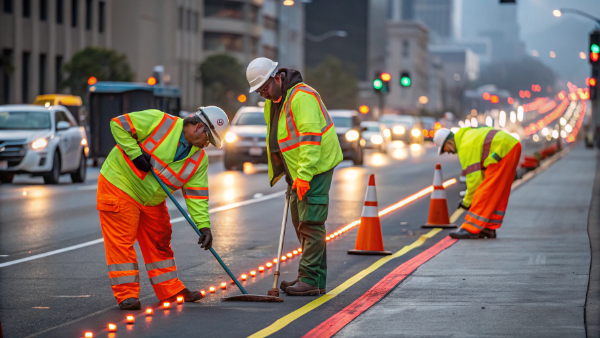Struggling with hi-vis compliance? Choosing the wrong standard can lead to rejected shipments and unsafe workers. Let me clarify the key differences to protect your business and reputation.
The main difference is that EN ISO 20471 is the European standard, while ANSI/ISEA 107 is the American standard. This means they are used in different regions and have distinct requirements for garment classification, design, material performance, and overall 360-degree visibility.
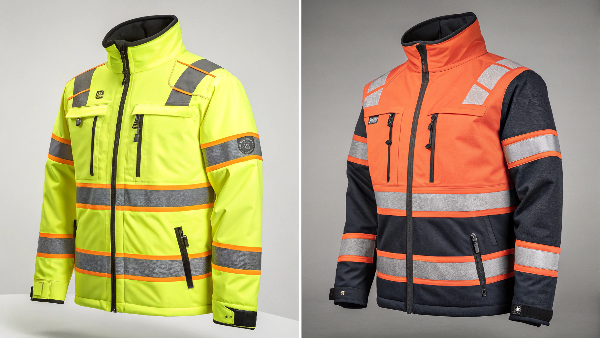
Now you know the basic distinction, but the details are what truly matter for sourcing, design, and ensuring compliance. A mistake in understanding these details can be costly. For over a decade, we've helped clients navigate these regulations, and I've seen firsthand how a small misunderstanding can derail a large order. Let's look closer at what sets these two major standards apart. Understanding this will save you a lot of time and money in the long run.
What is the fundamental difference between ANSI and EN standards?
Sourcing globally can be tricky. Mixing up ANSI and EN standards is not a small mistake; it's a compliance failure1 that can lead to costly recalls and denied market access.
ANSI standards are voluntary consensus benchmarks for the U.S. market, focusing on performance criteria2. In contrast, EN standards are harmonized European regulations that are mandatory for products sold in the EU, ensuring they meet essential safety requirements3 and allow for free trade.

The differences between these standards start at their core purpose and the organizations that create them. For anyone importing or exporting safety apparel, understanding this context is the first step toward compliance. As a manufacturer, we deal with these distinctions daily to ensure every product we ship meets the precise legal requirements of its destination country.
The Organizations Behind the Standards
ANSI, the American National Standards Institute, is a private, non-profit organization. It doesn't write standards itself. Instead, it oversees and accredits other organizations that do, like the International Safety Equipment Association (ISEA), which develops the ANSI/ISEA 107 standard. This system creates voluntary standards that are often adopted into law by bodies like OSHA.
On the other hand, EN, or European Norms, are developed by the European Committee for Standardization (CEN). When an EN standard is created, it becomes mandatory for all member states in the European Union. This approach harmonizes regulations across the continent, creating a single market.
The Purpose of Each System
Here is a simple table to show their core differences:
| Feature | ANSI (American National Standards Institute) | EN (European Norms) |
|---|---|---|
| Region | Primarily United States | European Union & EFTA countries |
| Nature | Voluntary (often adopted by law, e.g., by OSHA) | Mandatory for market access (requires CE marking4) |
| Creator | Accredits standards-developing organizations (e.g., ISEA) | Developed by CEN/CENELEC/ETSI |
| Goal | Ensure product performance and market-driven safety | Harmonize standards to create a single EU market |
What are the requirements for EN ISO 20471?
Need to sell hi-vis gear in Europe? Failing to meet the strict EN ISO 204715 requirements means your products won't even make it past customs, let alone to a work site.
EN ISO 20471 requires specific minimum areas of fluorescent and retroreflective material for its three garment classes. It strictly mandates 360-degree visibility6 with continuous horizontal reflective bands7 on the torso, sleeves, and legs. All materials must pass rigorous color and performance tests.
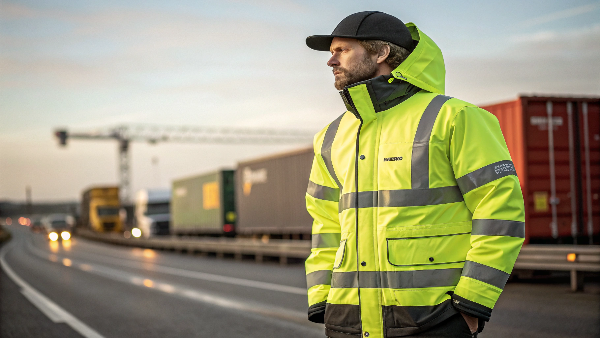
Meeting EN ISO 20471 is not just about using bright fabrics. It's about a total design philosophy centered on conspicuity from all angles. For over 15 years, we have mastered these requirements, ensuring every garment we produce for our European clients is fully compliant. Based on my experience, the design rules are where many non-European brands first make mistakes. Let's break down the two most critical components: garment classification8 and design mandates9.
Garment Classification (Class 1, 2, 3)
The standard classifies garments based on the level of risk in the work environment, which corresponds to the minimum required area of high-visibility materials.
| Class | Fluorescent Material (m²) | Retroreflective Material (m²) | Example Garment |
|---|---|---|---|
| Class 3 | ≥ 0.80 | ≥ 0.20 | Jacket with sleeves, Coverall |
| Class 2 | ≥ 0.50 | ≥ 0.13 | Vest, Sleeveless Jacket |
| Class 1 | ≥ 0.14 | ≥ 0.10 | Trousers, Harness |
Key Design Mandates
The most important design rule is the requirement for 360° visibility. I've worked with many clients, like Danny Cheng in the US, who were surprised by this rule when expanding into Europe. The standard demands one or two horizontal bands of retroreflective tape around the torso. If the garment has sleeves, they must have two horizontal reflective bands. Trousers must also have two horizontal bands on each leg. These bands cannot be interrupted by large logos on the front or back. This ensures a worker is visible as a human shape from any direction, which is a non-negotiable safety feature under this standard.
So, what does the ANSI/ISEA 107 standard cover?
Targeting the American market? Assuming its hi-vis rules are the same as Europe's will cause you major design headaches and lead to non-compliant products that your customers can't use.
The ANSI/ISEA 10710 standard defines hi-vis clothing for the U.S. It classifies garments by Type (O, R, or P) based on the work environment and by Performance Class (1, 2, or 3) based on material coverage. This standard offers more design flexibility11 than EN ISO 20471.
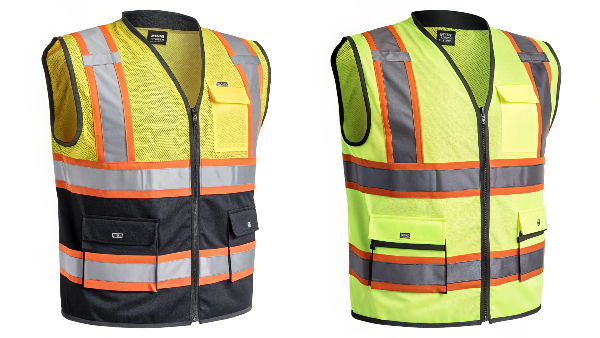
The American standard is built around a practical question: "Who is the user and where will they be working?" This approach shapes its entire classification system. As a manufacturer serving North American clients for years, we have found this system allows for more specialized and job-specific solutions. For example, a design that is perfect for a roadway worker might be different from what a public safety12 officer needs, and the ANSI standard accounts for this.
Garment Types (O, R, P)
This is a key difference from the European standard. ANSI/ISEA 107 specifies "Types" based on the work environment to help employers easily select the right gear.
| Type | Environment | Worker Examples |
|---|---|---|
| Type O | Off-Road | Warehouse workers, parking lot attendants, event staff |
| Type R | Roadway | Road construction workers, survey crews, airport ground crews |
| Type P | Public Safety | Police officers, firefighters, EMS responders |
Performance Classes (1, 2, 3)
Similar to EN ISO 20471, ANSI/ISEA 107 uses Performance Classes to dictate the minimum amount of visible materials. However, the specific area requirements and design rules differ. For instance, ANSI allows for more flexibility in the placement of reflective tape and logos, as long as the minimum area requirements are met. The latest version, ANSI/ISEA 107-2020, streamlined this system by merging the old ANSI 20713 standard for public safety12 into Type P, simplifying the selection process for everyone.
Is there still a difference between ANSI 107 and 207?
You might still have old spec sheets or customer requests that cite ANSI 207. Using this outdated information will lead to producing non-compliant or irrelevant gear for today's public safety market.
No, there is no longer a difference because ANSI/ISEA 207 is now an obsolete standard. It was absorbed into ANSI/ISEA 107 starting with the 2015 version, creating the "Type P" classification for public safety. Today, all compliant garments fall under the single ANSI/ISEA 107 standard.
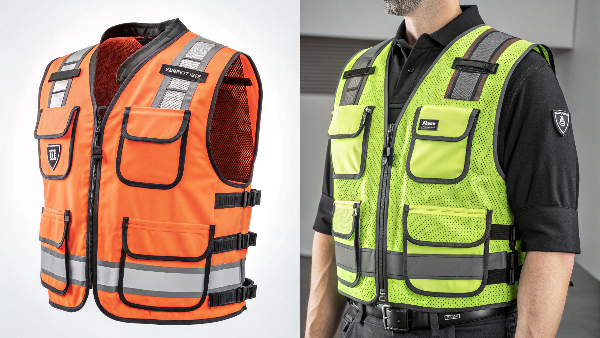
The consolidation of these two standards was a logical and welcome change in the industry. It eliminated confusion for both manufacturers and buyers. At Vissafety, we helped many of our clients transition their product lines smoothly when this change occurred. The goal was to create a single, comprehensive standard for all high-visibility apparel in the U.S., and it was successful.
Why the Consolidation Happened
Having two separate standards was confusing. A police officer directing traffic at a crash site (a roadway hazard) needed a vest, but which standard applied? ANSI 107 or 207? Combining them into one document streamlined the selection process. It recognized that public safety workers often face the same roadway hazards as construction crews, but with unique job requirements that demanded special garment features.
Key Features of a Type P Garment
The new Type P category within ANSI 107 didn't just absorb the old standard; it integrated its most important features. For example, my client Danny Cheng works with many public safety distributors. They specifically need Type P vests that are shorter in the front to allow easy access to belt-mounted equipment like a firearm, radio, or medical kit. Another critical feature inherited from ANSI 207 is the 5-point breakaway design. This allows the vest to tear away safely if it gets snagged on a passing vehicle or grabbed by a suspect, preventing serious injury. It's a lifesaver.
What is the latest version of the ANSI 107 standard?
Are you still designing products based on old industry standards? You risk producing obsolete gear that won't sell or, worse, won't meet current safety regulations. Always use the latest version.
The latest version is ANSI/ISEA 107-2020. It maintains the core structure of the 2015 version, including the Type (O, R, P) and Performance Class system. This edition provides further clarifications on testing protocols14 and updated language but introduces no major structural changes.
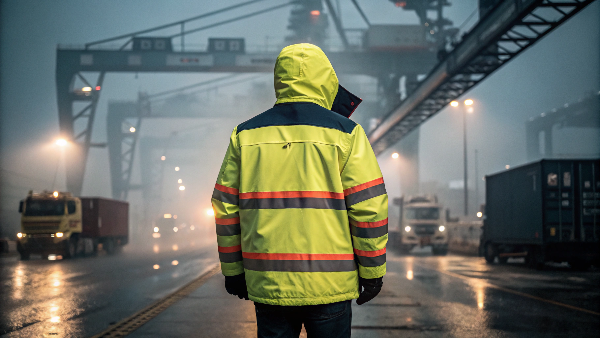
For anyone in the safety apparel industry, staying current is not just good practice—it's essential for compliance and liability15. The 2020 update is a refinement, not a revolution. It fine-tunes the standard to ensure consistency and clarity, which is good news for both designers and manufacturers. At Vissafety, our in-house lab team immediately updated all our procedures to align with a new version as soon as it's released.
Key Clarifications in the 2020 Version
The ANSI/ISEA 107-2020 update focuses on keeping the standard aligned with the latest testing methods from organizations like ASTM and AATCC. For example, it might specify a newer version of a test for colorfastness or water resistance. These changes are technical and mostly concern the testing lab, but they ensure that every certified garment performs reliably and consistently, no matter who manufactures it. It closes small loopholes and makes the standard stronger.
What This Means For You
For a designer like Jacky, this means your existing designs compliant with the 2015 standard are almost certainly compliant with the 2020 version. The fundamental requirements for material area and placement have not changed. However, for us as your manufacturing partner, it means our responsibility is to be technically precise. We ensure our 75+ testing devices are calibrated to a T, matching the exact test methods referenced in the 2020 standard. This guarantees that every single batch of fabric meets the latest compliance rules, giving our clients like you complete peace of mind.
Conclusion
Whether for Europe's EN ISO 20471 or America's ANSI 107, compliance is key. Understanding these regional differences ensures your team is safe and your products are compliant.
-
Learn about the risks and costs associated with compliance failures. ↩
-
Explore the performance criteria to ensure your products meet safety requirements. ↩
-
Learn about the essential safety requirements to ensure worker protection. ↩
-
Discover the importance of CE marking for compliance in the European market. ↩
-
Explore this link to understand the European standard for hi-vis clothing and ensure compliance. ↩
-
Understand the significance of 360-degree visibility for worker safety. ↩
-
Learn about the specific requirements for reflective bands to enhance visibility. ↩
-
Discover how garment classification impacts safety and compliance in the industry. ↩
-
Explore the design mandates to ensure compliance with EN ISO 20471. ↩
-
Learn about the American standard for hi-vis clothing to avoid compliance issues. ↩
-
Explore how ANSI/ISEA 107 offers design flexibility for various work environments. ↩
-
Explore the specific requirements for public safety apparel to ensure compliance. ↩ ↩
-
Find out about the consolidation of ANSI 207 into ANSI/ISEA 107 for clarity. ↩
-
Stay updated on testing protocols to ensure compliance and safety. ↩
-
Discover how compliance impacts liability and risk management in the industry. ↩

